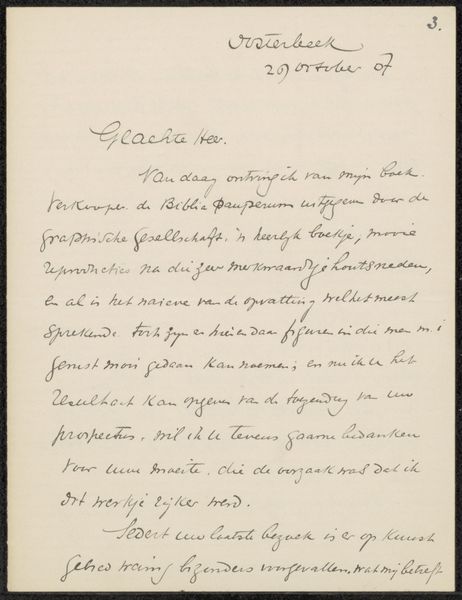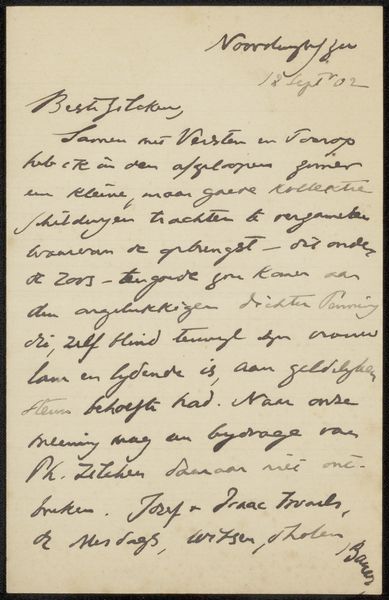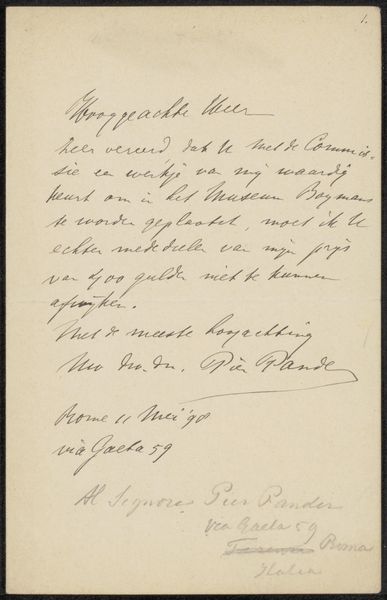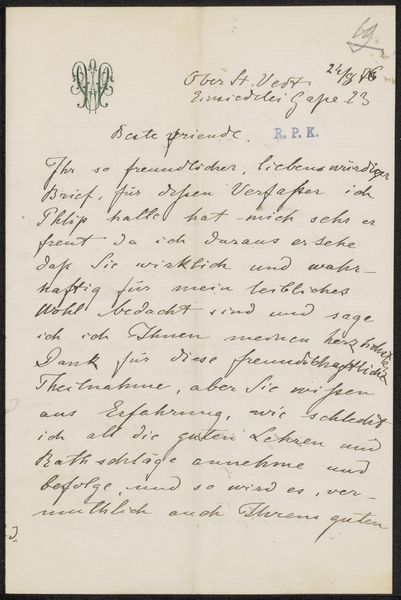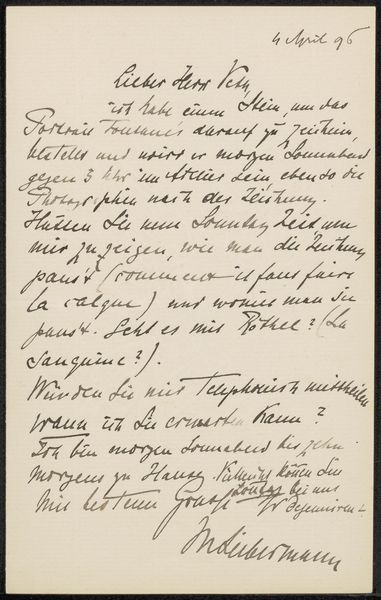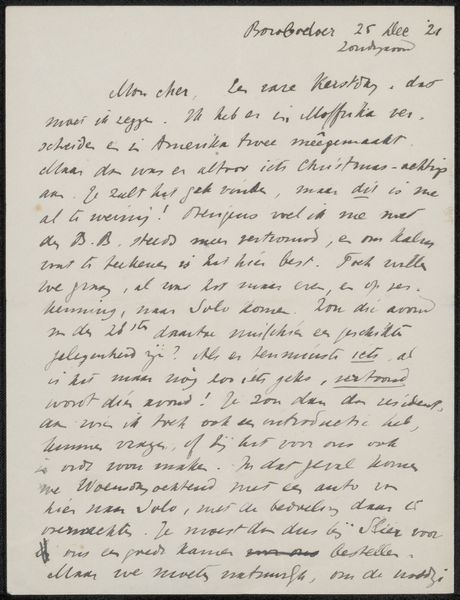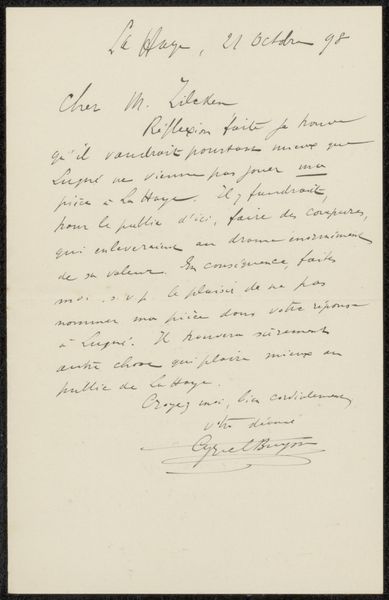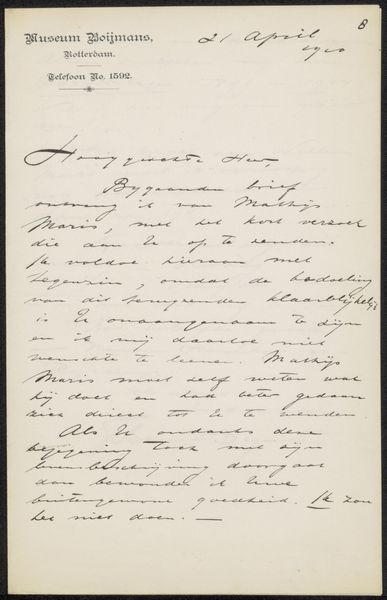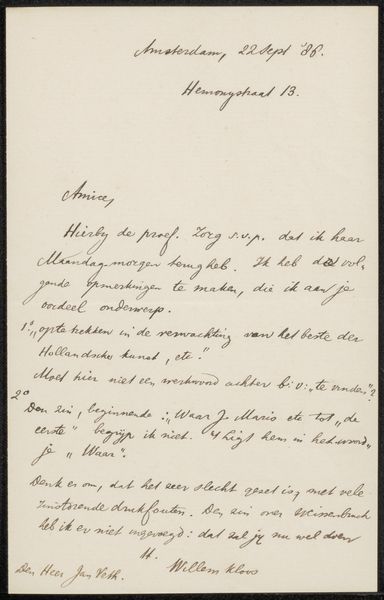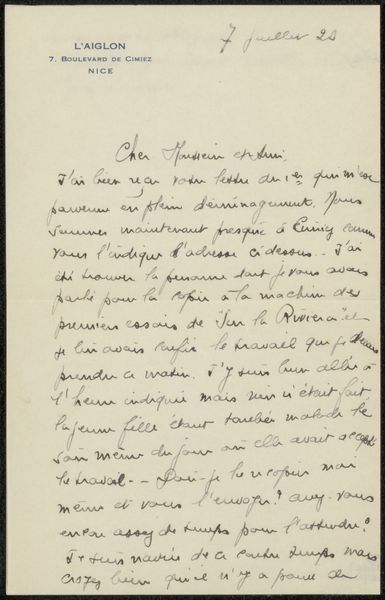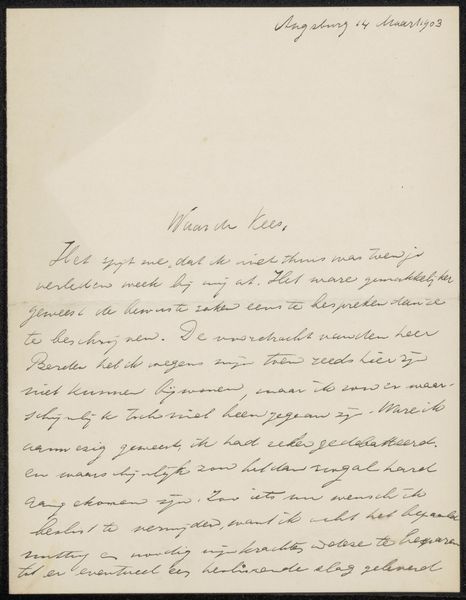
drawing, paper, ink, pen
#
pen and ink
#
drawing
#
paper
#
personal sketchbook
#
ink
#
ink drawing experimentation
#
pen
#
calligraphy
Copyright: Rijks Museum: Open Domain
Editor: This is "Brief aan Jan Veth," possibly from between 1906 and 1923, by Ernst Wilhelm Moes. It’s ink on paper, a handwritten letter. I'm immediately drawn to the elegant, almost performative quality of the script, though it also seems quite personal. What do you see in this piece, from a historical perspective? Curator: Well, immediately, I see a glimpse into the social networks of the art world at the turn of the 20th century. This letter, likely tucked away in a personal sketchbook, offers insight into the relationships between artists, critics, and perhaps even dealers. We must ask, what was the role of letter writing in establishing artistic reputation and patronage during this period? Who was Jan Veth? How did Moes position himself in relation to him? Editor: That’s fascinating. So the letter itself is a historical document, a snapshot of that art world’s infrastructure. The handwritten aspect makes it feel like a direct connection to the artist and his time. Does the letter's content suggest anything about artistic concerns or debates of the period? Curator: The content, while needing closer analysis of its precise wording and Veth’s response, hints at the struggles artists faced gaining recognition, dealing with vendors, and so on. Considering Moes was working during a time when modern art movements were gaining momentum, it's compelling to consider whether this correspondence reflects his negotiation with established academic or societal norms in Holland at that moment in history. We see it preserved by the Rijksmuseum Prentenkabinet today. How do institutional choices influence what we value? Editor: That adds a new layer of understanding for me. I had only viewed it for its calligraphic and visual qualities but knowing it illuminates the art world's politics of the period makes it all the more interesting. Thank you! Curator: Indeed. These seemingly private documents contribute significantly to a broader narrative about art’s social and cultural history. There is always much more to be discovered.
Comments
No comments
Be the first to comment and join the conversation on the ultimate creative platform.
